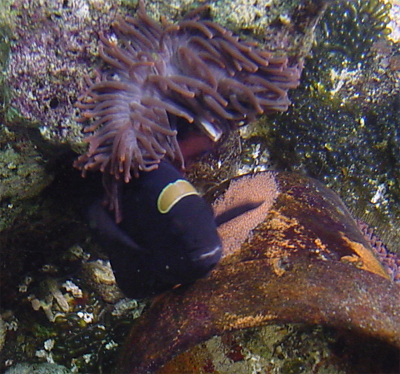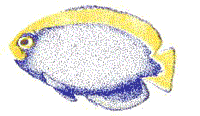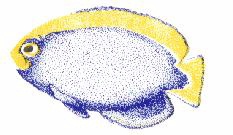|
Clownfish Egg Incubation
By Stanley Brown
The Breeders Registry
Incubation periods vary between the species and water temperature also
affects development, but typically the eggs will hatch on the 6th to 10th
night after the eggs were laid. The eggs undergo several distinct
color changes as they develop; the eyes are usually visible by day 3-4
followed by a change in overall darkening of the coloration to a orange-tan
purple, followed by a silver/quicksilver color just prior to hatching.
The exact coloration may vary, but the silver/quicksilver coloration with
distinctly visible eyes is usually a good indicator that the eggs will
hatch within a night or two.

The aquarist need do little during this period as the adults will care
for the eggs, constantly guarding, fanning, and removing undeveloped eggs.
Occasionally the adults may eat the eggs. This is not uncommon with
newly spawning pairs. Generally this behavior abates after several
spawns, but in some instances it may be necessary to separate the pair
and re-pair with other fish.. During the incubation, feed normally
and avoid disturbing the pair or the system (not a good time for a thorough
cleaning, although some have reported that the pair seemed unconcerned
with major activity by the aquarist. EACH pair is different.
i- Fautine, Daphne G. & Allen, Gerald, R., 1994,
Anemonefishes and their Host Sea Anemones, Tetra Press, Germany.
ii- Personal communication, 2000, Joe Lichtenbert, Reef
Propagationís, USA.
iii- Ibid. i
iv- Moe, Martin Jr., A., 1989, The Marine Aquarium Reference:
Systems and Invertebrates, Green Turtle Publications, USA
v- Wilkerson, Joyce D., 1998, Clownfishes: A Guide to
their Captive Care, Breeding & Natural History; ,Microcosm Ltd.,
USA
vi- Brown, Stanley D., 1998, Low Tech Larval Trap,
The Journal of MaquaCulture, Vol 6:1-17 |
|












